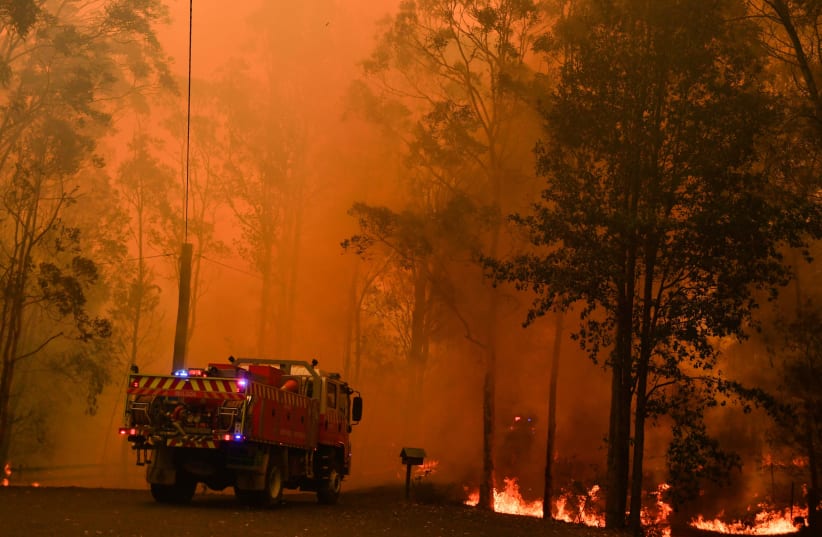Australian forest fires were able to send smoke particles around the world, eventually returning to a different part of the fifth continent, Israeli scientists found in a new study published in Science.The raging bush fires released millions of tons of smoke particles. Most settled back to the ground in the space of a few days, but enough were able to blanket the Southern hemisphere for months, leading Prof. Ilan Koren and Dr. Eitan Hirsch to wonder how that came into being.
Usually, smoke particles are trapped in the troposphere, the lowest layer of the planet’s atmosphere. However this layer is not the same all around the world. Over the tropics it is thick, reaching up to 18 km from the surface of the Earth, at the 45th parallel north and south it is “only” between eight and ten km. The smoke particles released by Australian bush fires simply had less distance to cross to break the tropopause, a layer which usually acts as a “ceiling” within the troposphere for smoke.
Koren, from the Weizmann Institute of Science’s Earth and Planetary Science Department, and Hirsch, Head of the Environmental Sciences Division at the Israel Institute for Biological Research in Ness Tziona, were able to understand this by pouring over satellite measurements of Aerosol optical depth.AOD measures if sunlight is blocked, the data revealed pollution levels three times above what is normal. Had volcanos erupted the data would make sense, but what was the reason for these readings?
The two researchers used available data to walk back and examine how the pollution spread. In this manner, they were able to demonstrate pollution in Chile originated in the fifth continent. This is because above the troposphere is an even air current that enables smoke particles to cover a lot of distance before they settle down again.
“People in Chile were breathing particles from the Australian fires,” Hirsch noted. Eventually the particles went all the way around the globe, reaching the west coast of Australia.
The study pointed out that similar levels of AOD were noted after forest fires in Canada, which were far from the equator.
How did the smoke particles get so high? The study suggests that the unique nature of the mid-latitude cyclone belt that runs through south Australia is the key.
The smoke was moved by the winds to the Pacific Ocean, then, some of it was lifted up through the cores of clouds. This process, which is called “cloud invigoration by aerosols,” allowed more clouds to form and so penetrate the tropopause.
Koren noted that for people on the ground "the air may have just seemed a bit hazier" but the high AOD means the end result would be a cooling effect seeing as sun light had been blocked on much higher levels than normal.
He noted the long-term effects of such a cooling on marine life or weather patterns is unknown.
Prof. Ilan Koren’s research is supported by the de Botton Center for Marine Science; the Sussman Family Center for the Study of Environmental Sciences; the Dr. Scholl Foundation Center for Water and Climate Research; the Ben May Center for Chemical Theory and Computation; Scott Eric Jordan; the Yotam Project; the estate of Emile Mimran; and the European Research Council. Prof. Koren is the incumbent of the Beck / Lebovic Chair for Research in Climate Change.
